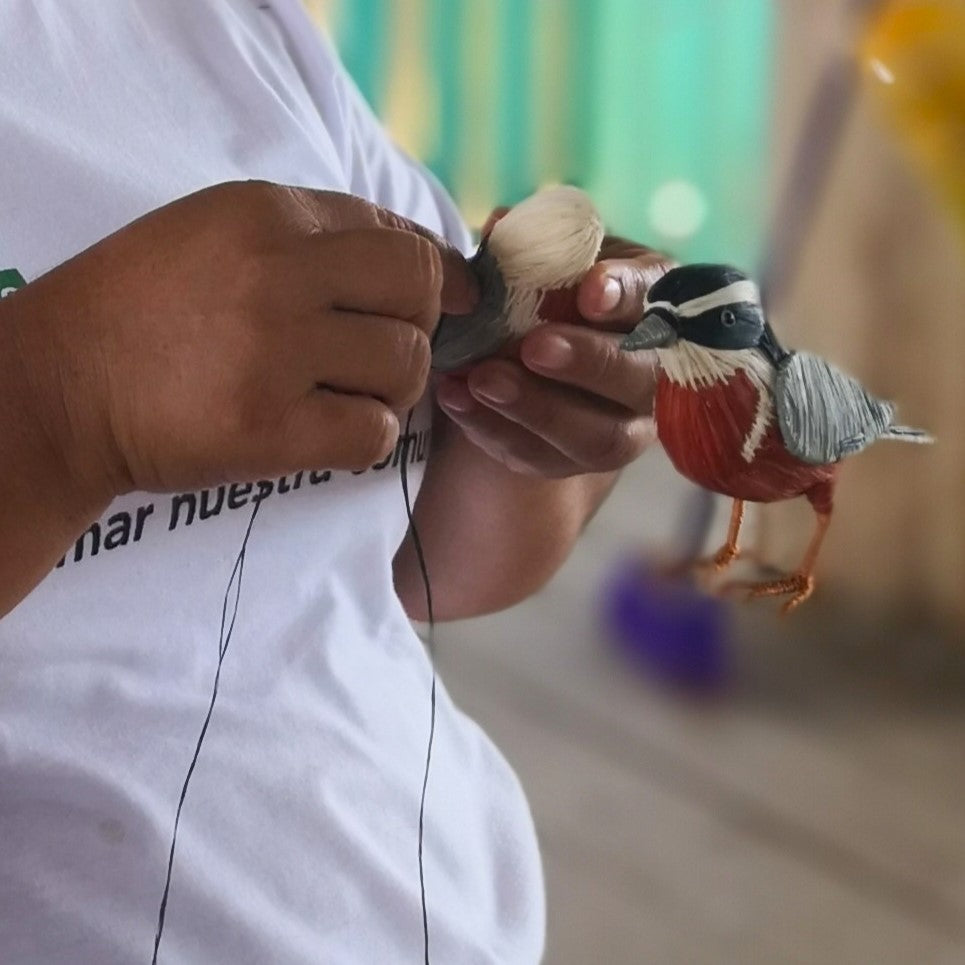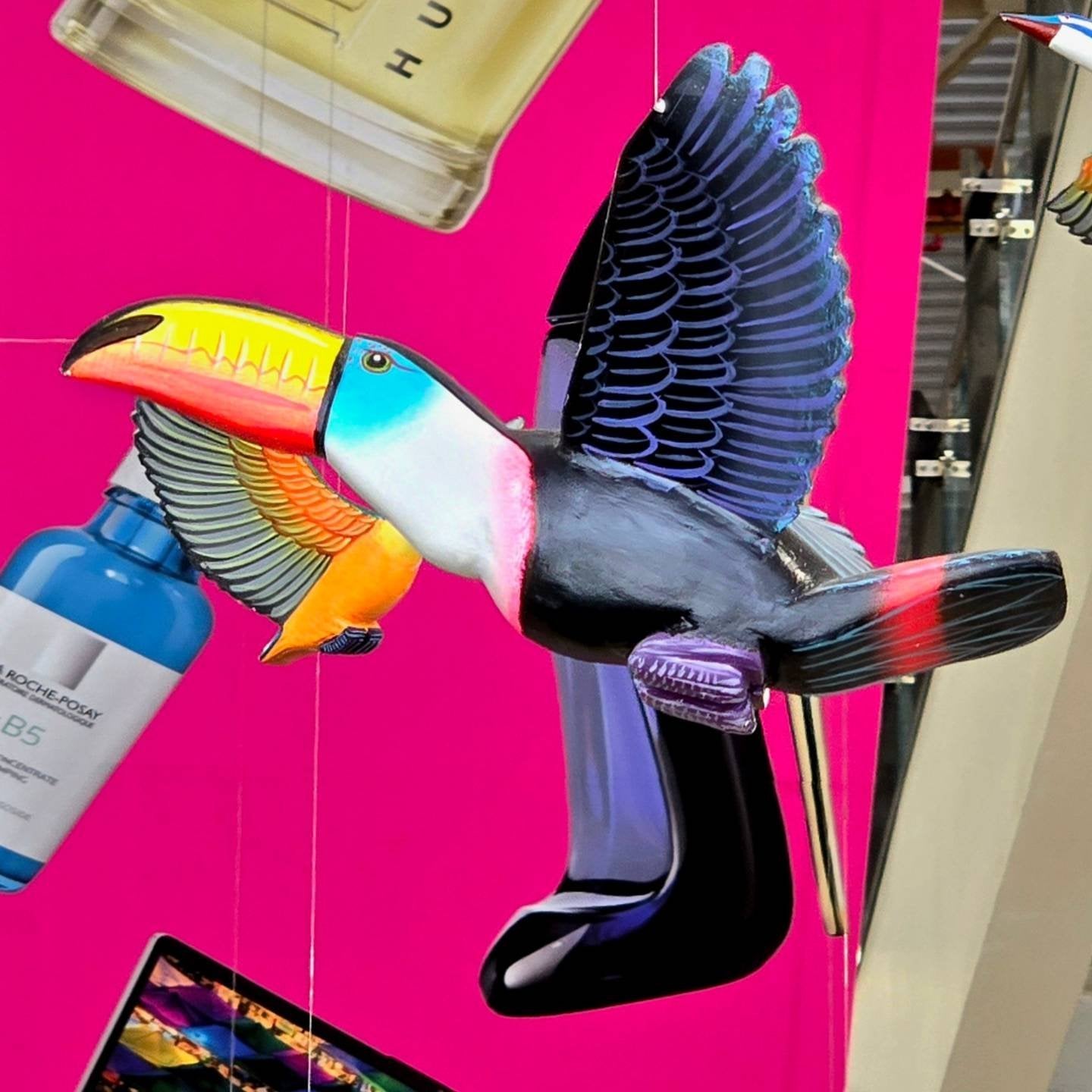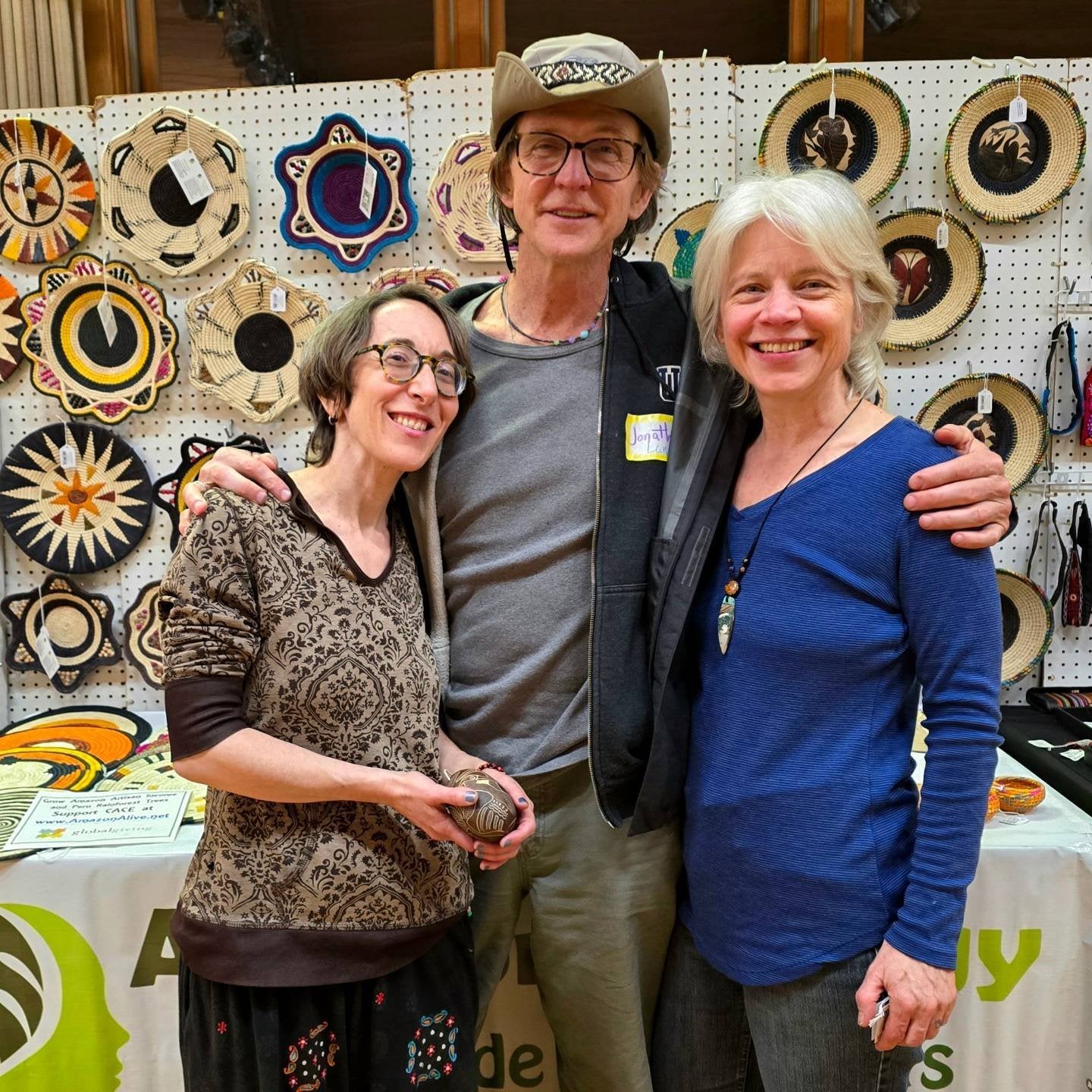I'd like to share a wonderful experience we recently had in the peasant community of Esperanza on the Tahuayo River. Our journey began with an hour long trip from Iquitos to the town of Tamshiyacu in an express “rapido” motorboat followed by a two-hour trip in a “ponguero" type river bus to Esperanza where we were warmly welcomed by our artisan hosts to hold a four-day long basic workshop on weaving bird ornaments with chambira palm fiber.
The workshop brought together 40 artisans who were mostly women from Esperanza and the neighboring communities of Santa Cruz and El Chino. The artisans from Esperanza had made thousands of high-quality chambira baskets for export to the US over a decade ago, but this market had disappeared. Santa Cruz also had many talented artisans, but their signature products were colorful fans which needed a lot of raw material for the low price they could earn for this simple product. We had bought beautiful baskets and other crafts from the Chino artisans for many years and offered bird making workshops before the pandemic, but only a few of them were still trying to sell woven birds to tourists who visited their village. All of these Tahuayo River artisans were enthusiastic about learning to make high-quality bird ornaments to increase their craft-selling income.

In the past six years, we have learned much better how to train artisan facilitators to lead this kind of workshop. The facilitators for this one were experienced artisans from the village of San Francisco on the Marañón River. Pablo had led over a dozen of these training sessions in four watersheds. His apprentice facilitator was Wilson who had also demonstrated his creativity, patience, attention to detail, and desire to share to his skills and learn from his fellow artisans.

In preparation for this workshop, we commissioned Pablo and Wilson to make woven models of the osprey and the red-breasted nuthatch. The osprey is an eagle-sized raptor well-known for its fish hunting prowess and piercing cries on top of nests built by the sea. The nuthatch is a small songbird who seeks seeds and insects in northern forests and is a frequent visitor to bird feeders in the U.S. The artisans were told ahead of time what shades of grey, black, and rusty orange chambira they should bring to make these two species. The facilitators used both photos and samples of the woven birds to guide the artisans. This was the first time any of them had made these birds and was the first time some of them had made any woven bird.
One touching moment was a comment from artisan Marilia was an accomplished weaver. She told us with a smile, "I enjoyed making the bird and want to keep practicing. It was the first time I had woven something like this. I didn’t think I could do it at first, but I liked it and while it wasn’t easy, it wasn’t too difficult. I felt very supported by the facilitators and my companions, which made it very comfortable and fun. I learned a lot and am motivated to keep improving."

Dora, another participant, shared a similar experience. "Making birds was quite a surprise because it seemed very complicated, but with the help of the facilitators, I finished the goal of making two kinds of birds. One of them was even good enough to sell to Amazon Ecology. While I can keeping making other crafts, I can also make birds to sell to tourists, and it's a technique I want to keep practicing. The workshop showed me there is always room to learn new things and improve my techniques.” We felt and shared her pride.
Everything in the workshop did not go smoothly. One artisan fell unexpectedly ill, and we had to take her to a nearby medical post. Fortunately, we made sure she got the medical attention she needed. This incident reminded us we need to always be prepared to help our community with any situation that might arise, particularly in these communities that are far from the city.
By the end of the workshop, the artisans had completed 80 chambira birds, and we bought 30 of them that met our high quality standards to send to the U.S. for sale to the growing number of people there who appreciate these unique handmade crafts. This was a good starting point for many artisans who feel inspired to keep expanding and improving their skills.
We left Esperanza with new knowledge, skills, friendships and lasting memories. We feel grateful for the opportunities to share these moments and witness the desire and commitment of each participant to grow. We will keep bringing these workshops to more communities because we believe in the power of art and crafts to transform lives and promote the conservation of our beautiful Amazon.




